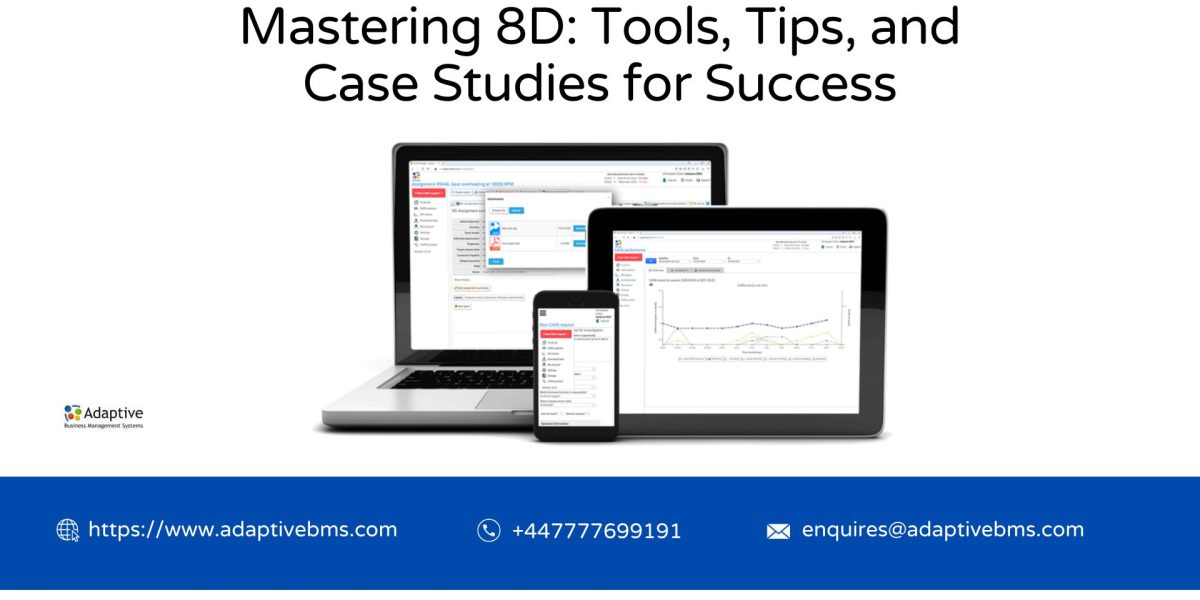According to industry reports, over 60% of companies will use structured problem-solving tools like 8D by 2025. The 8D method helps teams find the root cause of problems and fix them for good. It’s a smart, step-by-step system used in many industries.
With the help of the best investigation software, teams can track issues, work together, and solve problems faster. In this blog, you’ll discover what 8D is, useful tools, expert tips, and real case studies.
What is 8D Problem-Solving?
The 8D problem-solving method is a way to fix big problems step by step. It was first made by the car company Ford. Now, many businesses use it to find out what went wrong and make sure it doesn’t happen again. It works really well in factories, hospitals, and even tech companies.
The “8D” means 8 Disciplines or 8 steps. Each step helps teams solve problems the right way. Here’s a quick look at each one:
- D1 – Make a Team: Choose the right people who know about the problem.
- D2 – Describe the Problem: Write down what the problem is, when it started, and who it affects.
- D3 – Take Quick Action: Do something fast to stop the problem from getting worse.
- D4 – Find the Root Cause: Look closely and ask questions like “Why did this happen?”
- D5 – Choose a Fix: Pick the best way to fix the real cause of the problem.
- D6 – Put the Fix in Place: Make the fix work and check that it really solves the problem.
- D7 – Stop it from Coming Back: Add rules or changes so it won’t happen again.
- D8 – Say Thank You: Thank the team and share what you learned.
These steps help teams stay organized, think clearly, and fix problems for good.
Must-Have Tools for the 8D Process
To solve problems well, you need good tools. First, use 8D problem solving software. It helps your team stay organized, track every step, and work faster. You can try tools like Qualityze, Praxie, or SafetyCulture. Next, use charts like the Fishbone diagram to find out what caused the problem. Ask “Why?” five times to dig deeper. Use a Pareto chart to find the most common issues. Also, talk with your team using shared notes or chat apps. These tools help you work together, solve the root cause, and make sure the problem doesn’t come back.
Pro Tips for Effective 8D Implementation
Pick the Right Team
Start by choosing the right people. Each person should know something about the problem. A team with different skills works best.
Be Clear About the Problem
Write down the problem in simple words. Use facts and data to explain what happened. Make sure everyone understands it the same way.
Dig Deep for the Real Cause
Don’t stop at the first reason you find. Use tools like “5 Whys” to ask why over and over. Look closely to find the root cause.
Create Strong Fixes
Fixes should last. Don’t just solve the problem for now—make sure it won’t come back.
Celebrate the Team
When the problem is solved, thank your team. Share what worked and what everyone learned. It makes the team stronger!
Real-World Case Studies
In the automotive industry, a car company had the same part break again and again. They used the 8D steps to find out the real reason. The problem was in the way the part was made. They fixed the process and the problem stopped.
In the field of electronics, a manufacturing facility faced challenges with receiving components promptly. This caused big delays. The team used 8D problem solving software to track each step. They found the delay was from one slow supplier. They changed suppliers, and the work got faster.
In healthcare, a hospital used 8D to fix slow patient check-ins. They changed their workflow and saved time every day.
Benefits of Using 8D in Business
- Fixes the real problem: You don’t just cover up issues. You find and solve the real cause, so it doesn’t happen again.
- Improves product quality: Solving problems the right way makes your products and services better.
- Boosts team collaboration: The team works together, shares ideas, and solves problems faster.
- Prevents future mistakes: By learning from the problem, you put in place changes to avoid it in the future.
- Saves time and money: You won’t waste resources fixing the same issue over and over again.
- Builds trust with customers: When you fix problems well, your customers will trust you more and keep coming back.
- Encourages continuous improvement: Using 8D helps your business always get better, not just fix problems.
Final Thought
To wrap it up, the 8D method is a powerful tool for solving problems in any business. It helps you find the real cause of issues and fix them for good. Using 8D software makes this process even easier by keeping everything organized and on track. At Adaptive BMS, we help businesses implement this method smoothly.
Start using 8D in your business today. It can save time, improve quality, and make your team stronger. Don’t wait to fix problems – use the 8D steps and watch your business improve with Adaptive BMS!












